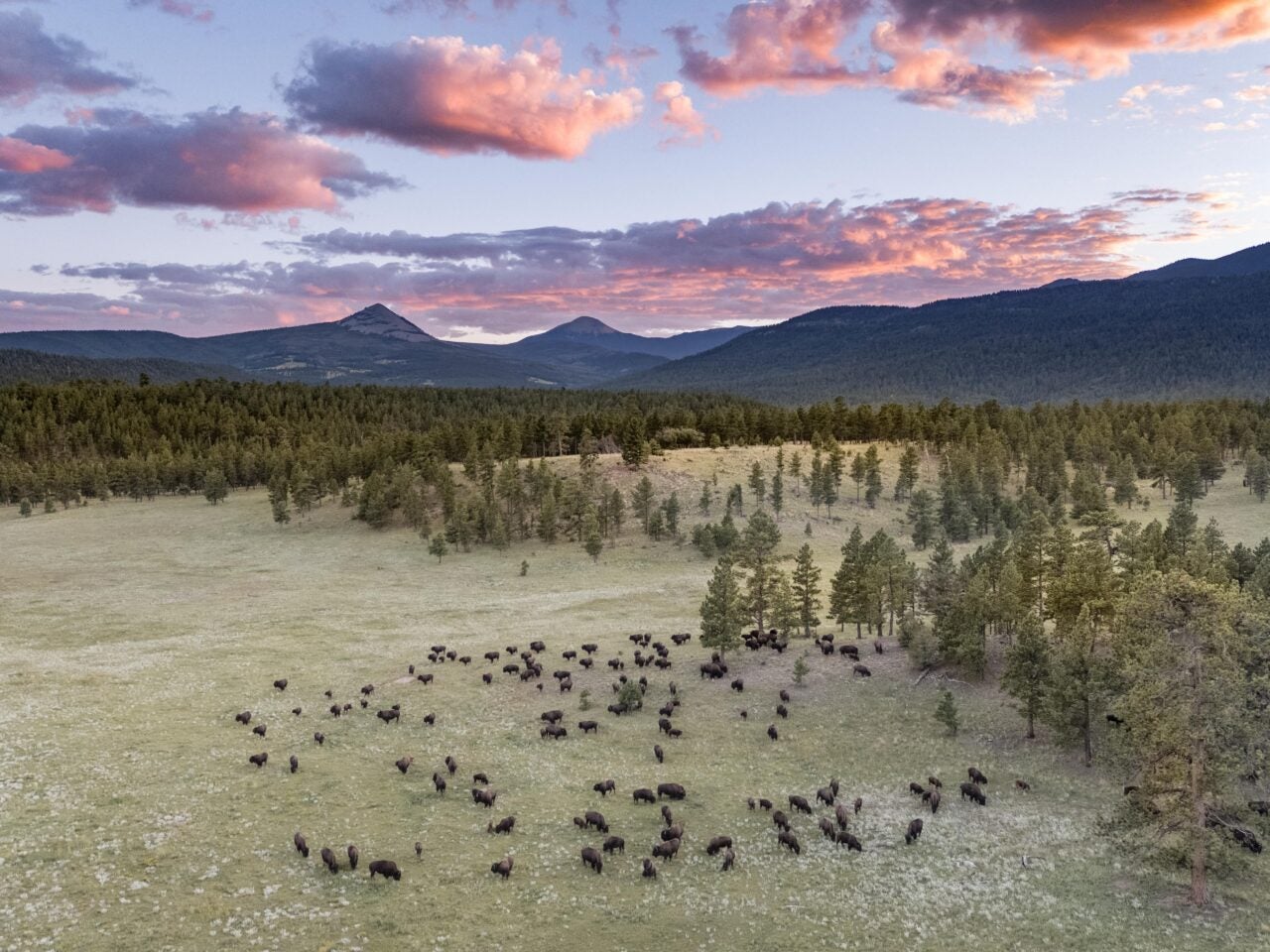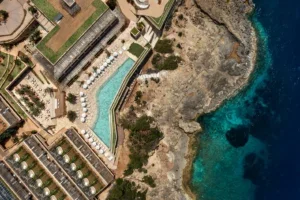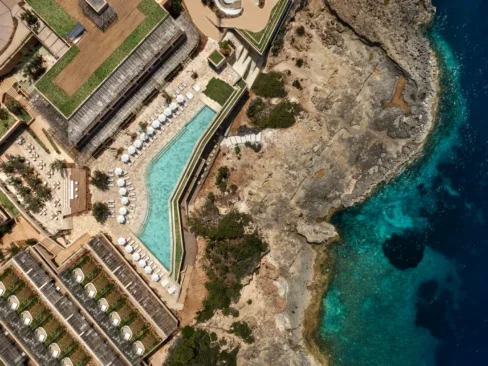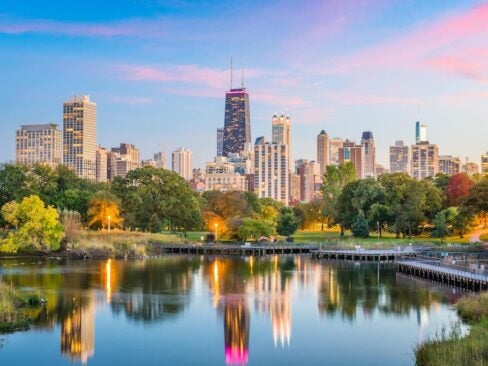When Ted Turner bought the sprawling 558,000-acre Vermejo Park Ranch in northern New Mexico from motor oil giant, Pennzoil, back in 1996, his goal was simply to “save everything”. But the media mogul had a long and difficult road ahead.
The property had changed hands countless times over the previous century, to the detriment of the land. “If you go back 100 years, the philosophy was that you could cut down a lot of trees, remove some species, allow invasive animal populations to grow, and add fish to the waters that weren’t native,” says Jade McBride, managing director of Ted Turner Reserves, who lives onsite at Vermejo. “They were using the land in a way that was killing it.”
This changed with the arrival of Ted Turner. His first job was closing down the active open-pit coal mine on the property – the recovery efforts of which are still ongoing today. Over the last 25 years, the American broadcasting entrepreneur and philanthropist has been hard at work restoring the land, and, more recently, breaking into the eco-luxury tourism market to fund ongoing conservation efforts.
[See also: Earth Day: The Luxury Resorts and Hotels Going Green]
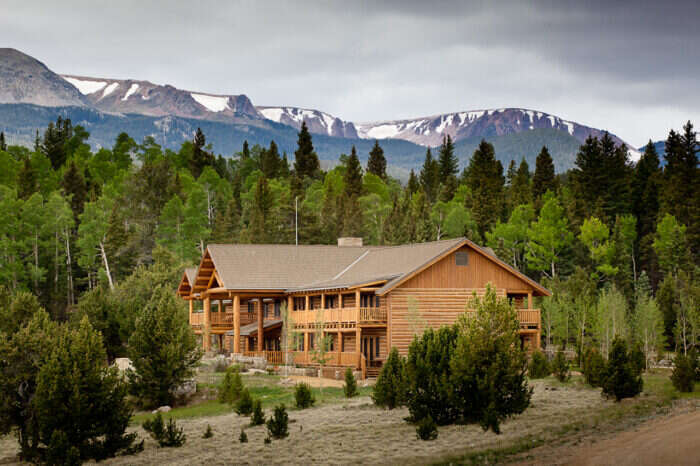
The Costilla Lodge offers stunning views of the Sangre de Cristo mountain range / ©Ted Turner Reserves
“Ted recognized that if he were to pass away without a structure in place, the properties were at risk of being sold, broken apart and going back to the way they were before,” explains McBride. “We knew that we needed to generate as much revenue as we could, with as little impact on the land as possible, which led us to the luxury boutique market.”
McBride came on board in 2016 to help make this ambitious goal a reality, taking responsibility for guest operations at all three Ted Turner Reserve properties across New Mexico (Vermejo, Sierra Grande and Ladder). The managing director cut his teeth at Amangiri, a luxury resort in Big Water Utah, where he previously served as mayor. He went on to manage The Ranch at Rock Creek, a high-end resort in Western Montana, overseeing its restructure and path to profitability.
Drawing on this extensive experience, McBride understood how critical it was to get the local community onside when he joined Ted Turner Reserves. But this wasn’t easy. As the second biggest private landowner in the US (with over 2 million acres to his name), some local residents were suspicious of Ted Turner’s intentions when he acquired Vermejo.

The Ted Turner Suite at Casa Grande, one of the luxurious accommodations at Vermejo / ©Ted Turner Reserves

The opulent Great Room at Casa Grande / ©Ted Turner Reserves
“It was a rocky road at the beginning,” recalls McBride. “When Ted first bought these properties there was a lot of pushback. Like ‘Who’s this rich billionaire buying up the land?’ However, over time a lot of people have realized he’s a fantastic neighbor. His focus was always on buying the land, not for status, but to try and restore the ecosystem, bringing it back to something we could call sustainable and leaving the community of people that surround these properties better off than we found them.”
Conservation work is carried out by a team of specialist wildlife biologists, who live onsite and closely monitor the land. “They spend a lot of time trying to determine what is the healthy number of animals for the ecosystem,” explains McBride. “For example, at Vermejo, that number happens to be 1,400 bison. We could make a lot more money if we grazed 2,800 animals instead, but we’re not going to flood our land with more bison than it can sustain.”
A similar approach is taken when it comes to tourism, with a limited number of guests able to visit the property’s luxurious accommodation at any one time to ensure minimal impact on the wildlife and surrounding environment.
Any recommendations are reviewed by a host of additional scientists – the Turner Endangered Species Fund and the Turner Biodiversity Group – before being submitted to the Wildlife Committee which makes the final decision on approval.
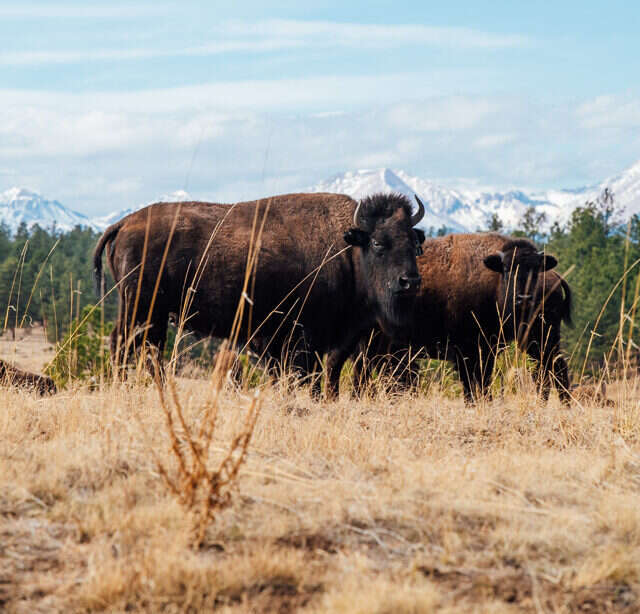
The property hosts a variety of wildlife including bison, elk, black bears and mountain lions / ©Ted Turner Reserves
For McBride, the biggest conservation success story at Vermejo is the rehabilitation of the endangered Rio Grande cutthroat trout, which is a program that goes back 20 years. This involved cleaning and restoring over 100 miles of stream habitat, and raising the native fish species in captivity before reintroducing them to the wild.
The elk population also had an unexpected role to play. McBride explains that when there are too many elk, they eat more than their fair share of grass which forces animals to start eating grass from the riverbank to survive. In turn, he continues, the riverbanks start to erode and the sun shines directly into the water, causing its temperature to increase. For the Rio Grande cutthroat trout, which thrives in clear, cold streams, this loss of habitat can prove deadly.
So what’s the answer? Quite simply, says McBride, “we had to operate a hunting program to restore the riverbanks and change the elk population from invasive and harmful to what we believe is sustainable.”
The managing director concedes he had initial concerns. “I was very nervous in the beginning when I first got here, the idea that I was going to bring ecotourism to a property that had to hunt – how could we possibly blend those two concepts?” he says.
“But it’s been one of the best things for me to learn about since I’ve been part of the project. And it’s easy for me today to look back at human history and see that we were hunter-gatherers in an extremely sustainable way, feeding our families, using everything from the animal for exactly what we needed. If you dig into the hunting program that Vermejo operates today, it probably looks similar to how it was 500 years ago.”
The efforts have certainly paid off. Today, the native fish has been removed from the endangered species list. “For the first time you can actually fish for and catch a Rio Grande cutthroat trout in water in the wild,” says McBride. “It’s connected to so many different things from riverbank restoration to the predators that all tie this ecosystem back together. It’s a spectacular story.”
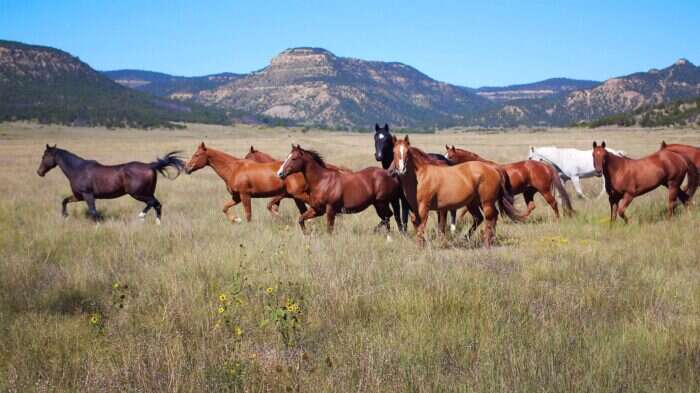
Vermejo is home to a large population of wild horses / ©Sean Fitzgerald
This is just one of many opportunities visitors have to fully immerse themselves in the stunning natural environment, with regular wildlife touring experiences to see the herds of bison, elk, deer and antelopes living on the land. “It’s really interesting how many people tell me they can’t believe how much they learned through their vacation here,” says McBride.
“When we talk about the health of our planet, the message we generally hear is a lot of doom and gloom. ‘We’re in trouble. Things are bad.’ And it’s all pretty accurate in my opinion. But what’s so unique about a visit to Vermejo is that you leave with a message of hope. Because what you’re witnessing is a property that was in a very poor condition, that is healing and regenerating itself,” he says.
Of course, McBride is only too aware that to make real progress, these efforts must extend far beyond a single entity. That’s why Ted Turner Reserves was among the founding members of Beyond Green – a network of properties championing sustainable tourism. Each member must demonstrate progress in meeting over 50 indicators that align with the global sustainable tourism standards and United Nations Sustainable Development Goals. Every two years, Beyond Green inspectors visit the properties to ensure they are moving towards these targets.
McBride welcomes being held accountable in this way as he believes it means travelers are able to look at the collection of properties and have confidence that the right value system is in place.
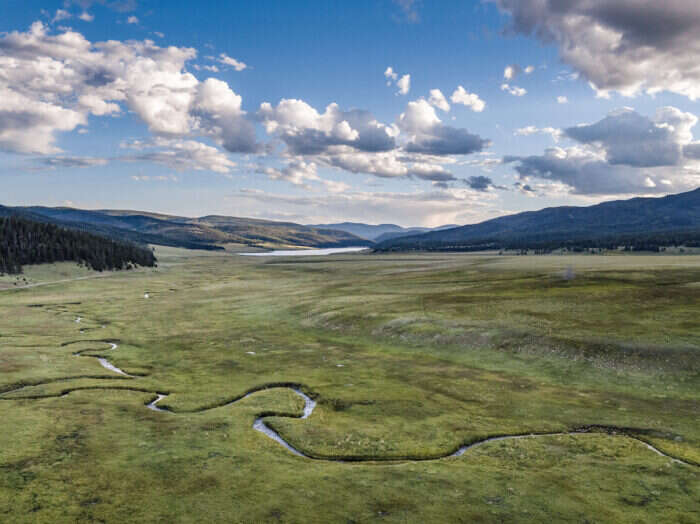
The sprawling 550-acre property boasts mountains, forests and 19 lakes / ©Sean Fitzgerald
“The goal of [the members] is that one day we won’t need the collection anymore,” he says. “But I think it’s a long way out. Luxury hospitality brands are going to have to endure in these sustainability efforts for decades – it’s something that needs to be eternal in nature.”
Asked what keeps him awake at night, McBride’s answer is somewhat surprising. “It’s actually our own success,” he admits. “We’ve grown leaps and bounds each season I’ve been here but our success has this problem: it gives us money. And if we’re not careful there’s a real temptation to spend that money on more luxury. So the real challenge we have is to continue to do the right thing as we become more successful – building an organization that is rooted in conservation.”
With McBride at the helm, this will no doubt be a path the company will continue to follow. It’s clear the managing director’s commitment to the cause goes far beyond a day job; he wants to leave his mark on the world.
“When it comes to great examples of sustainable properties, you don’t find them in the United States. They’re just not here,” he says. “So I think we have a very unique opportunity to be a true leader. I’m convinced that it’s not only Ted’s life work and his legacy but it’s also mine. This will be the work that I’ll be proudest of and when I’m a really old guy sitting in a rocking chair, I’ll tell stories to my grandkids about the day I got to be a part of this.”
[See also: Discover All of Colorado and New Mexico in One Trip]





